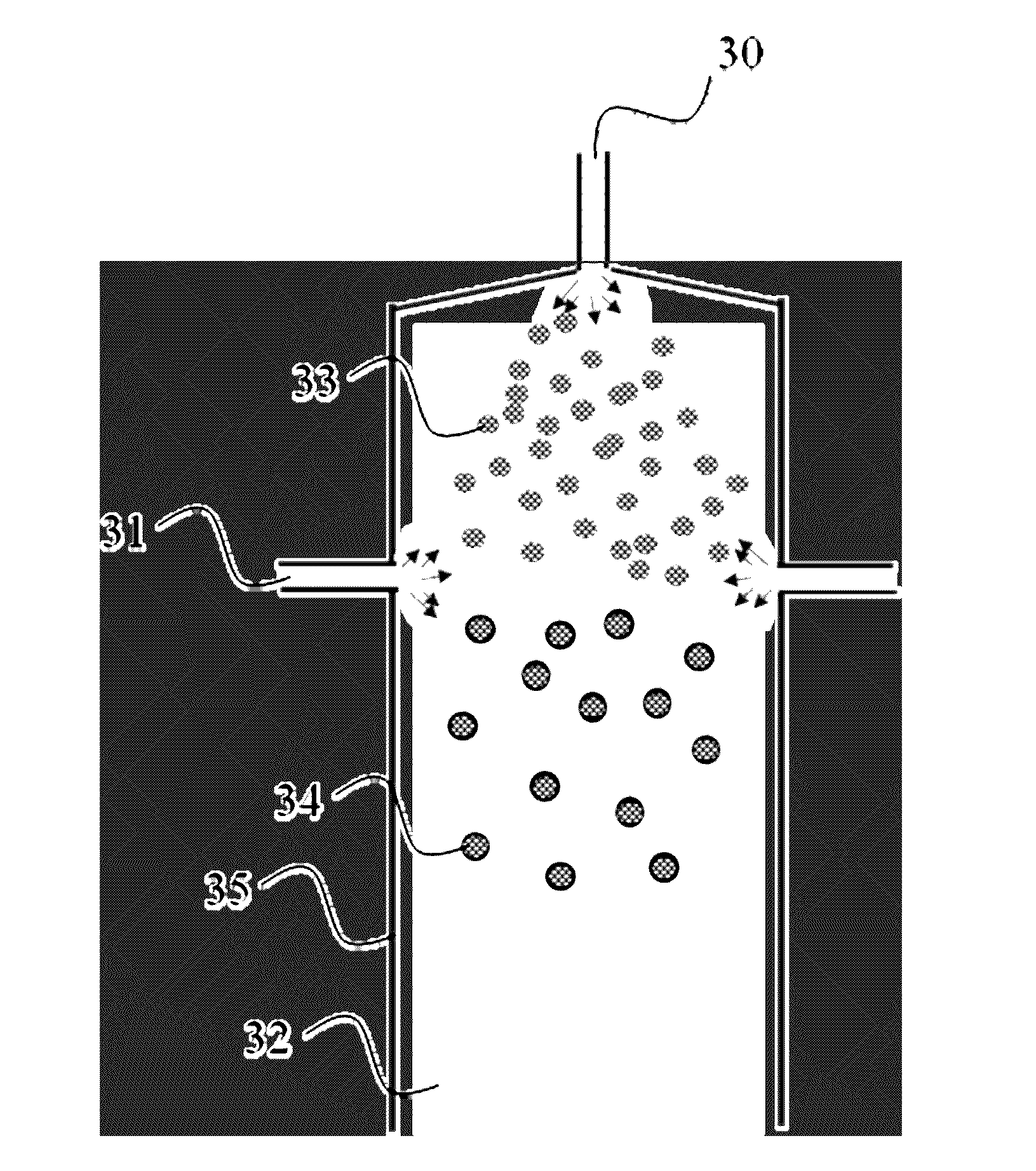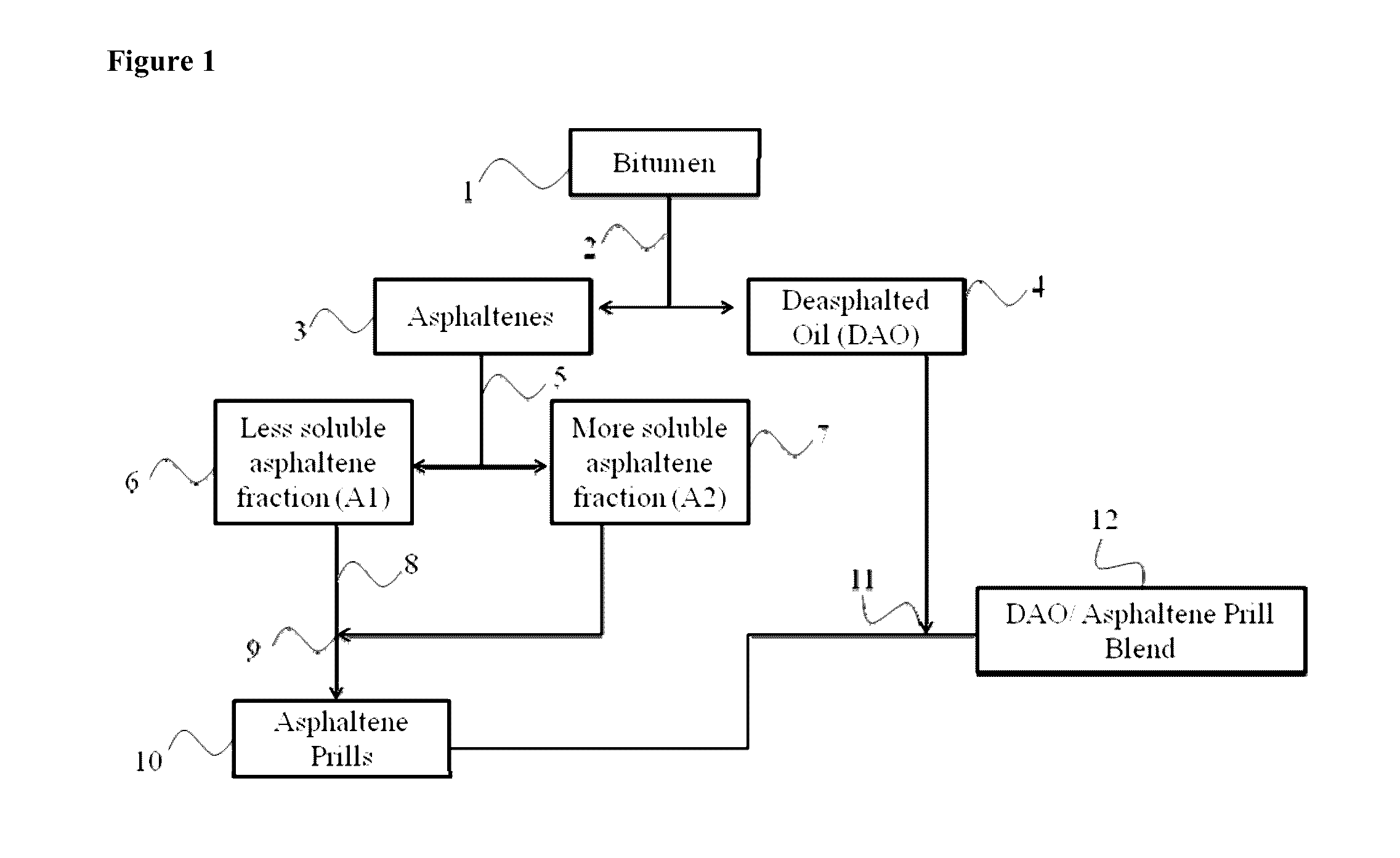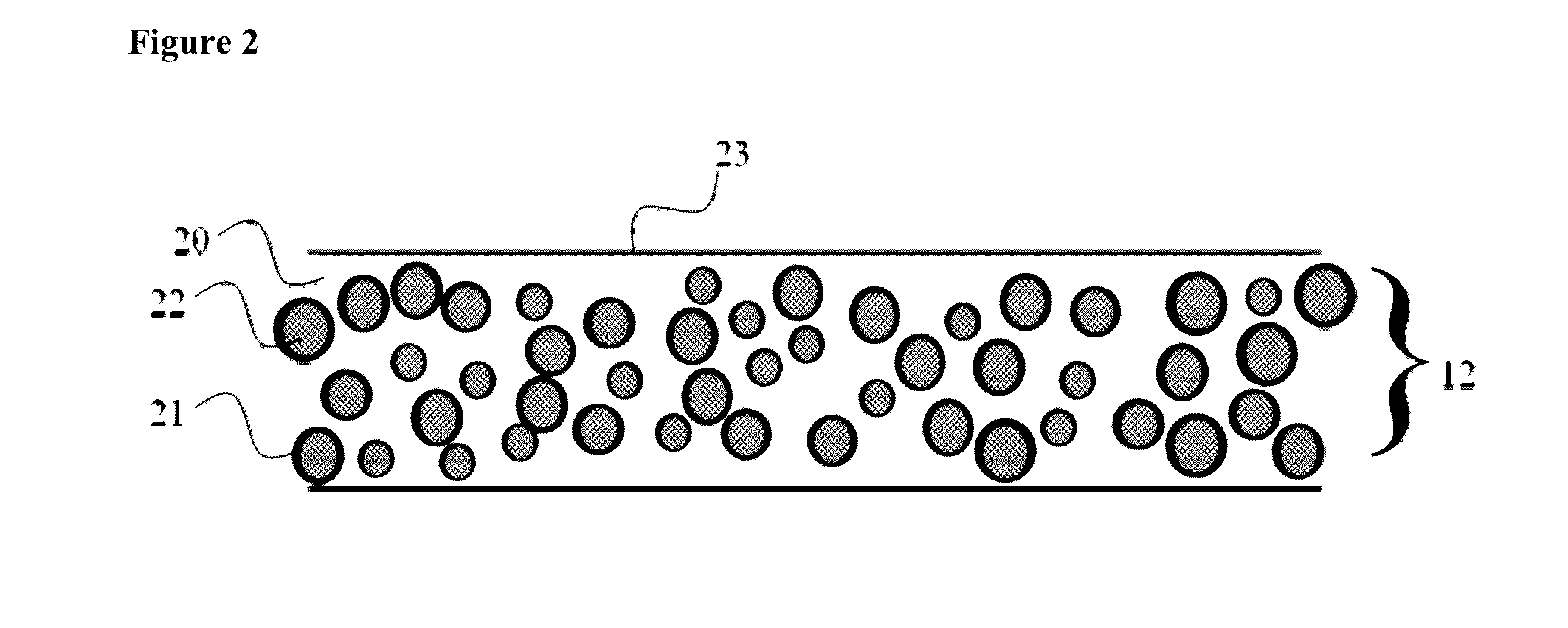Bitumen processing and transport
a technology of bitumen and processing, applied in the field of preparing, converting, and/or transporting bitumen, can solve the problems of complex recovery and transportation of bitumen to refineries, difficulty in achieving the effect of reducing the viscosity of oil
- Summary
- Abstract
- Description
- Claims
- Application Information
AI Technical Summary
Benefits of technology
Problems solved by technology
Method used
Image
Examples
example 1
Prilling Process
[0116]As detailed above, the asphaltene prills (10) may be produced using any suitable prilling or pelletizing process known to those of skill in the art. An example of a prilling process for forming asphaltene prills (34) is illustrated in FIG. 3. The asphaltene prills (34) may be formed using a micro-prilling process in a prilling vessel such as a prilling tower (35). In this example, the A2 asphaltene fraction (30) (i.e. the more soluble asphaltene fraction) is directed through one or more inlets into the upper portion of the prilling tower at a temperature of approximately 200° C. and at a pressure / other conditions which ensure that the A2 asphaltene fraction (30) is in liquid form when it enters the tower. The A2 fraction (30) is sprayed, atomized, dripped, or otherwise introduced into the tower such that it forms droplets which fall towards the bottom of the prilling tower.
[0117]The exemplified prilling process utilizes a vapor carrier (32) (i.e. CH4) to cool t...
example 2
Prilling Process with Density Adjustment
[0119]Another example of a prilling process for forming asphaltene prills is illustrated in FIG. 4. Here, as in FIG. 3, the asphaltene prills (48) may be formed using a micro-prilling process in a prilling tower (46). In this example, the A2 asphaltene fraction (40) (i.e. the more soluble asphaltene fraction) is directed through one or more inlets into the upper portion of the prilling tower at a temperature of approximately 200° C. and at a pressure / other conditions which ensure that the A2 asphaltene fraction (40) is in liquid form when it enters the tower. The A2 fraction (40) is sprayed, atomized, dripped, or otherwise introduced into the tower such that it forms droplets or spheres which fall towards the bottom of the prilling tower. In the example shown in FIG. 4, the A2 fraction (40) is introduced into the prilling tower (46) along with a gas (41) (i.e. air, N2, CO2, H2O, CH4, etc . . . ), which forms micro and / or nano bubbles (42), suc...
PUM
| Property | Measurement | Unit |
|---|---|---|
| API gravity | aaaaa | aaaaa |
| diameter | aaaaa | aaaaa |
| temperature | aaaaa | aaaaa |
Abstract
Description
Claims
Application Information
 Login to View More
Login to View More - R&D
- Intellectual Property
- Life Sciences
- Materials
- Tech Scout
- Unparalleled Data Quality
- Higher Quality Content
- 60% Fewer Hallucinations
Browse by: Latest US Patents, China's latest patents, Technical Efficacy Thesaurus, Application Domain, Technology Topic, Popular Technical Reports.
© 2025 PatSnap. All rights reserved.Legal|Privacy policy|Modern Slavery Act Transparency Statement|Sitemap|About US| Contact US: help@patsnap.com



